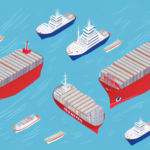What Are the Different Types of Dunnage?
Dunnage is an essential component of the shipping and logistics industry, used to secure and protect cargo during transport. It encompasses any materials or objects placed between or around shipments to prevent damage, movement, or shifting during transit. Selecting the right type of dunnage ensures that your goods reach their destination safely and in optimal condition. This comprehensive guide delves into the definition of dunnage, its various types and materials, advantages, and best practices.
Understanding the Importance of Dunnage in Shipping & Logistics
Dunnage plays a critical role in ensuring the safe transportation of goods over both short and long distances. Without proper dunnage, cargo can shift and collide during transit, leading to damage, breakage, or even loss. Such incidents can result in financial losses, liability issues, customer dissatisfaction, and reputational damage for shipping companies. Understanding the different types of dunnage and selecting the appropriate one based on the specific size, weight, shape, fragility, and transportation mode of your cargo is paramount.
Common Types of Dunnage
- Airbags: Ideal for filling voids and preventing lateral movement of cargo.
- Foam Inserts: Suitable for cushioning fragile items and reducing shock and vibration.
- Cardboard Dividers: Useful for separating and organizing smaller items.
- Wooden Blocks: Sturdy and capable of supporting heavy loads.
Additionally, considering the environmental impact of dunnage materials is crucial. Opting for eco-friendly options can contribute to sustainability efforts within the logistics industry.
The Basics of Dunnage: Definition, Function & Types
Dunnage refers to any material or object used to block, brace, cushion, separate, or fill space between cargo items, thereby preventing movement, rubbing, or collisions during transit. Its primary functions include absorbing shocks, vibrations, and impacts caused by the movement of the shipping container or vehicle, as well as distributing weight evenly across the container floor or pallet.
Functions of Dunnage
- Absorption: Mitigates shocks and vibrations.
- Distribution: Ensures even weight distribution.
- Separation: Prevents items from contacting each other.
Types of Dunnage
- Blocking: Secures heavy cargo in place.
- Bracing: Provides structural support.
- Cushioning: Protects fragile items.
- Void-Filling: Fills empty spaces to prevent shifting.
Choosing the right type of dunnage is essential to prevent damage or loss of goods during transit. For instance, blocking and bracing materials are ideal for heavy cargo, while cushioning materials are better suited for fragile items.
Types of Dunnage Materials: Wood, Plastic, Paper, and More
Various dunnage materials are suitable for different cargo types and transportation environments. The most common include wood, plastic, paper, foam, and airbags. Each material offers unique benefits and is selected based on specific requirements:
Wood
Wooden dunnage, such as lumber, plywood, and pallets, is preferred for heavy and bulky items that require strong support and stability. However, wooden dunnage may not be suitable for air transport due to weight restrictions and may require heat treatment for international shipments to prevent pest spread.
Plastic
Plastic dunnage, including crates, trays, and stretch films, provides moisture resistance and flexibility for irregularly shaped items. It's lightweight and cost-effective but may lack sufficient shock absorption for delicate goods.
Paper
Paper-based dunnage, such as corrugated cardboard and kraft paper, offers affordable cushioning and protection for fragile items. It's biodegradable and recyclable, making it an eco-friendly option, though it may not withstand heavy impacts or moisture.
Foam
Foam dunnage, like polyurethane and polystyrene foams, excels in shock absorption and vibration damping, ideal for delicate cargo. While effective, foam can be bulky and may increase shipping costs.
Airbags and Inflatable Systems
Airbags and inflatable systems, made from materials like polyethylene or vinyl, provide versatile void-filling and load leveling for irregular or variable shipments. They are adjustable but may not fit all shipment types perfectly.
How to Choose the Right Type of Dunnage for Your Shipping Needs
Selecting the appropriate dunnage involves considering several factors:
- Type of Cargo: Fragile items require more cushioning, while heavy items need robust support.
- Mode of Transportation: Air, sea, and road transport have different requirements and restrictions.
- Duration and Distance: Longer and longer-distance shipments may necessitate more durable dunnage.
- Environmental Conditions: Extreme temperatures or humidity levels influence material choice.
- Regulatory Compliance: Adhering to guidelines like the International Safe Transit Association's (ISTA) Testing Protocols and the Code of Federal Regulations (CFR) for hazardous materials.
- Cost and Sustainability: Balancing budget constraints with eco-friendly material options.
For example, shipments to tropical climates may benefit from plastic or metal dunnage that withstands moisture, while colder regions might be better served by wooden dunnage. Additionally, aligning with sustainability goals by choosing recyclable or biodegradable materials can enhance corporate responsibility.
Advantages and Disadvantages of Different Dunnage Materials
Each dunnage material presents its own set of advantages and disadvantages:
Wood
- Advantages: Strong, durable, supports heavy loads.
- Disadvantages: Increases weight and cost, potential environmental concerns.
Plastic
- Advantages: Lightweight, moisture-resistant, flexible.
- Disadvantages: Limited shock absorption, risk of puncture or tear.
Paper
- Advantages: Affordable, biodegradable, recyclable.
- Disadvantages: Limited durability, not ideal for heavy or moisture-prone shipments.
Foam
- Advantages: Excellent cushioning, vibrational damping.
- Disadvantages: Can be costly and bulky.
Airbags and Inflatable Systems
- Advantages: Versatile, adjustable to various shipment sizes.
- Disadvantages: May not suit all shipment types, requires proper inflation.
In addition to material choice, the design and placement of dunnage significantly impact its effectiveness. Combining materials, such as using foam with airbags, can enhance cushioning and shock absorption. Proper placement ensures that cargo remains stable without interfering with container doors or ventilation systems.
Best Practices for Using Dunnage to Secure Your Cargo During Transport
Effective use of dunnage involves meticulous planning, strategic placement, and regular inspection:
- Identify Vulnerable Areas: Determine which parts of the shipment are most susceptible to movement or damage.
- Select Appropriate Materials: Choose dunnage that matches the cargo's specific needs.
- Strategic Placement: Block, brace, cushion, or fill voids to prevent shifting without obstructing container functions.
- Regular Inspection: Monitor and adjust dunnage during transit to maintain cargo stability.
Additional considerations include the weight and size of the cargo. Heavy shipments may require thicker or more robust dunnage materials, while irregularly shaped or fragile items might benefit from customized solutions. Training staff in proper dunnage techniques and providing necessary tools ensures consistent protection. Developing contingency plans for unexpected events, such as severe weather, can further safeguard cargo integrity.
Storing and Disposing of Dunnage Properly
Proper storage and disposal of dunnage materials are vital for maintaining facility cleanliness, safety, and environmental stewardship:
Storage Guidelines
- Wood: Store in dry, ventilated areas to prevent warping and degradation.
- Plastic: Keep in designated areas to facilitate recycling and prevent contamination.
- Paper: Store in dry conditions to maintain integrity for reuse or recycling.
- Foam: Keep away from moisture and sources of heat to prevent deterioration.
Disposal Practices
- Wood: Dispose of according to local wood waste regulations.
- Plastic: Recycle or dispose of in designated plastic waste streams.
- Paper: Recycle or compost to minimize environmental impact.
- Foam: Recycle where possible or dispose of in appropriate plastic waste facilities.
- Airbags: Deflate and recycle through plastic waste channels.
Special handling may be required for dunnage that has been in contact with hazardous materials, necessitating disposal as hazardous waste. Additionally, certain materials like metal or glass can often be reused or repurposed, reducing waste and costs. Implementing recycling programs can also provide financial benefits by lowering disposal costs and potentially generating revenue from recycled materials.
Common Mistakes to Avoid When Using Dunnage for Shipping
Avoiding common pitfalls in dunnage usage can significantly enhance cargo protection and reduce risks:
- Underestimating Dunnage Requirements: Insufficient dunnage can lead to cargo movement and damage.
- Using Inappropriate Materials or Sizes: Mismatched dunnage can fail to provide adequate protection or may be inefficient.
- Using Damaged or Expired Dunnage: Compromised materials can reduce effectiveness and lead to cargo damage.
- Neglecting Regular Inspections: Failing to monitor dunnage during transit can result in unnoticed shifts or damages.
- Overloading or Underloading Shipments: Incorrect loading can strain dunnage and compromise cargo stability.
- Improper Placement: Placing dunnage too close to container doors or walls can interfere with container functions.
- Non-Compliance with Regulations: Ignoring shipping company guidelines and transport authority regulations can lead to legal issues and shipment delays.
Innovations in Dunnage: New Materials and Technologies
The dunnage industry is continually evolving, embracing new materials and technologies to enhance performance, sustainability, and cost-effectiveness:
Biodegradable and Compostable Materials
Innovations include biodegradable dunnage made from cornstarch, sugar cane, or mushroom fibers, reducing environmental impact and aligning with sustainability goals.
Smart Dunnage Systems
Smart dunnage incorporates sensors and algorithms to monitor cargo status and location during transit, dynamically adjusting protection measures to ensure maximum safety.
Recycled and Upcycled Materials
Upcycling materials such as used tires, plastic bottles, or fishing nets into dunnage promotes waste reduction and resource efficiency within the logistics chain.
The future of dunnage lies in adopting eco-friendly materials and leveraging technology to create more adaptable and efficient cargo protection solutions. These advancements not only enhance shipment safety but also contribute to a more sustainable and responsible transportation system.
In conclusion, dunnage is a vital element in the shipping and logistics industry, providing the necessary protection, stability, and efficiency for transporting goods. By understanding the different types of dunnage materials, their respective advantages and disadvantages, and adhering to best practices, shippers and logistics providers can ensure the safe and timely delivery of their cargo. Embracing innovations in dunnage materials and technologies further enhances these efforts, promoting a sustainable and resilient supply chain.






















